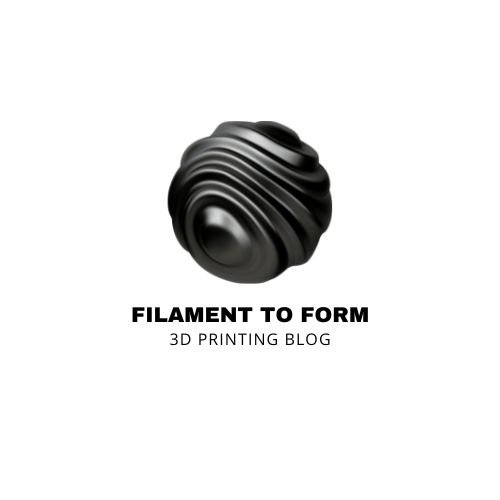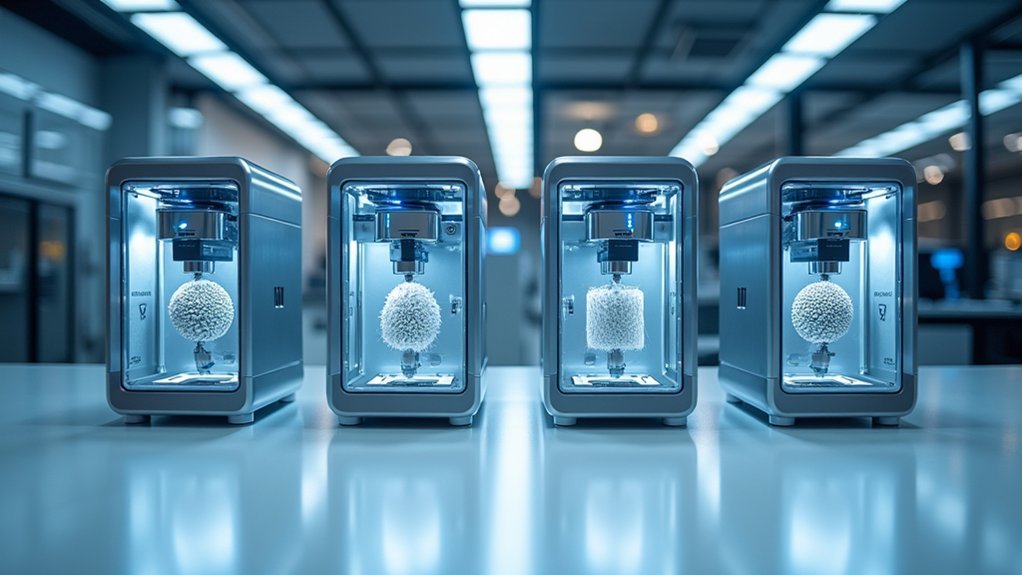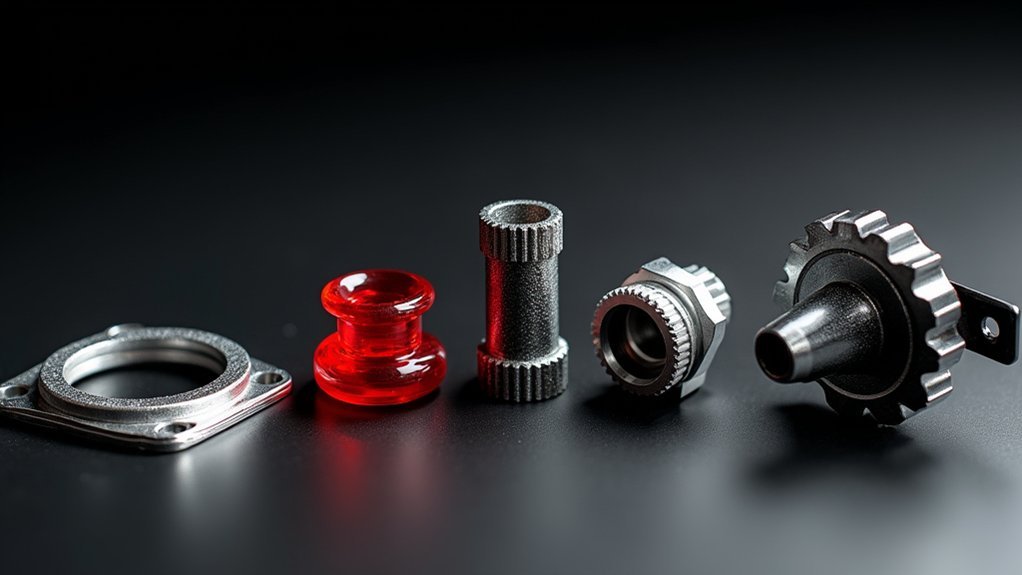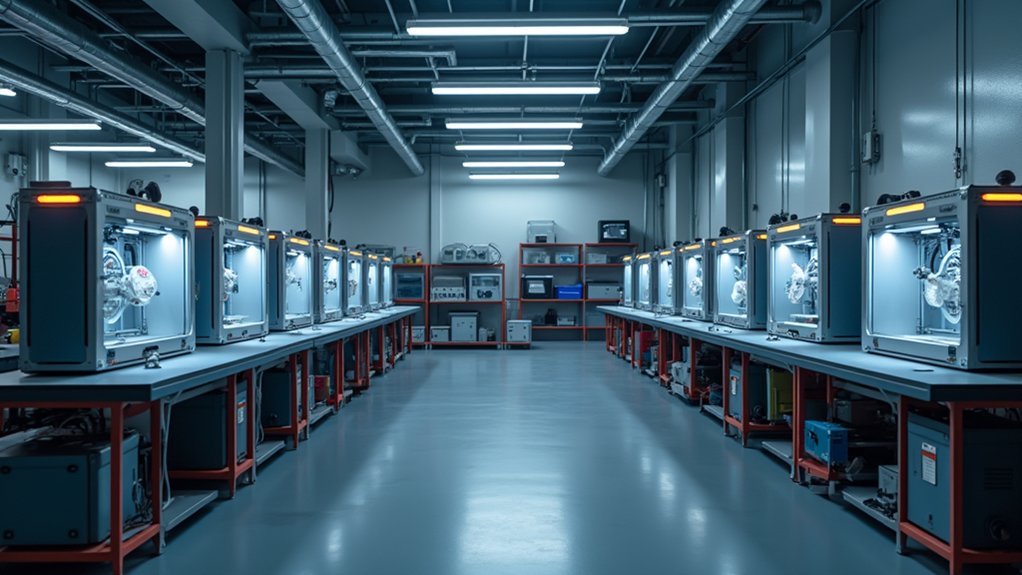You’re standing at the threshold of a medical revolution where 3D bioprinting isn’t just science fiction anymore. The most advanced equipment of 2025 can now print living tissues at speeds that’ll make your head spin—we’re talking 600mm/s capabilities that transform how doctors approach organ replacement and tissue repair. But speed isn’t everything when you’re literally printing parts for human bodies, and the selection process requires careful consideration of factors most people never think about.
FLASHFORGE Adventurer 5M Pro 3D Printer with High-Speed Auto Printing
The FLASHFORGE Adventurer 5M Pro delivers exceptional speed with Core XY acceleration reaching 20,000 mm/s² and maximum speeds of 600mm/s, making it perfect for researchers and professionals who need rapid prototyping without sacrificing precision. You’ll achieve consistent results with its vibration compensation technology that eliminates ghosting, while the 32mm³/s nozzle flow guarantees smooth extrusion. The dual air filtration system blocks 99% of particles and VOCs through HEPA13 and activated carbon layers. You can monitor prints remotely via the built-in chamber camera, and the automatic shutdown function saves energy after completion.
Best For: Researchers, professionals, and advanced hobbyists who need rapid prototyping capabilities with high precision and require quiet operation in office or lab environments.
Pros:
- Exceptional speed performance with Core XY acceleration up to 20,000 mm/s² and maximum speeds of 600mm/s for rapid prototyping
- Advanced air filtration system with HEPA13 and activated carbon layers blocks 99% of particles and VOCs for safer indoor use
- User-friendly features including one-click auto-leveling, 10-minute setup, remote monitoring camera, and vibration compensation for consistent quality
Cons:
- Compact 220x220x220mm build volume limits the size of objects that can be printed
- High-performance specifications may result in a premium price point compared to basic 3D printers
- Advanced features may be overwhelming for complete beginners new to 3D printing
IdeaFormer-3D IR3 V2 Conveyor Belt 3D Printer
Revolutionary endless printing capabilities make the IdeaFormer-3D IR3 V2 Conveyor Belt 3D Printer an exceptional choice for manufacturers and production facilities requiring continuous, large-scale output in 2025. You’ll achieve maximum 400mm/s print speeds with CoreXY structure and Klipper firmware integration. The upgraded metal conveyor belt features durable PEI coating, supporting PLA, PETG, ABS, TPU, ASA, and PP filaments. You’ll benefit from one-click auto calibration with Y-offset strain sensors and integrated roller gearbox for precision stability. The 250×250×∞mm print volume enables seamless serial production with support-free complex overhangs, though you’ll need patience during initial setup and software configuration.
Best For: Manufacturers, production facilities, and businesses requiring continuous large-scale 3D printing output with high-speed capabilities and minimal human intervention for serial production runs.
Pros:
- Revolutionary endless printing with 250×250×∞mm print volume enables continuous production and seamless serial manufacturing
- High-performance specifications including 400mm/s max print speed, CoreXY structure, and Klipper firmware for ultra-smooth motion
- Advanced automation features with one-click auto calibration, Y-offset strain sensors, and support for multiple filament types including PLA, PETG, ABS, TPU, ASA, and PP
Cons:
- Initial setup challenges including complex software installation and assembly instructions that may require technical expertise
- Klipper firmware requires specific adjustments and configuration for the unique mechanical setup which can be time-consuming
- Best results may require designing custom parts to accommodate the printer’s unique geometry rather than using standard designs
3D Bioprinting: Printing Parts for Bodies
Since you’re seeking equipment that bridges cutting-edge engineering with life-saving medical applications, 3D bioprinting systems of 2025 offer unparalleled precision for creating functional human tissues and organs. You’ll find these systems require significant technical expertise, resembling sophisticated research equipment more than conventional printers. The technology’s complexity means you’ll need mechanical engineering knowledge to operate them effectively. However, manufacturers are making systems increasingly accessible to broader medical audiences. You can expect revolutionary changes in medicine as this technology matures. These bioprinting platforms will fundamentally transform healthcare delivery, offering solutions for organ shortages while requiring substantial investment in both equipment and specialized training for ideal results.
Best For: Medical institutions and research facilities with significant technical expertise and budgets seeking to revolutionize healthcare through advanced tissue and organ printing capabilities.
Pros:
- Offers unparalleled precision for creating functional human tissues and organs
- Provides revolutionary solutions for critical organ shortages in healthcare
- Represents cutting-edge technology that bridges advanced engineering with life-saving medical applications
Cons:
- Requires significant technical expertise and mechanical engineering knowledge to operate effectively
- Demands substantial investment in both equipment costs and specialized training
- Systems resemble sophisticated research equipment rather than user-friendly conventional printers
FLASHFORGE Adventurer 5M Pro 3D Printer with Auto Printing System
For makers seeking lightning-fast 3D printing without sacrificing precision, FLASHFORGE’s Adventurer 5M Pro delivers exceptional performance with its 600mm/s maximum travel speed and 20,000mm/s² acceleration capabilities. You’ll appreciate the Core XY structure’s stability during high-speed movements, while the all-metal frame guarantees consistent quality. The automatic bed leveling eliminates manual adjustments, and you can choose from multiple nozzle sizes (0.25mm to 0.8mm) to balance speed with detail. You’ll get started within 10 minutes of unboxing, monitor progress remotely via the Flash Maker app, and print diverse materials including PLA, ABS, PETG, and carbon fiber composites.
Best For: Professional makers, engineers, and hobbyists who need high-speed 3D printing with precision for prototyping, functional parts, and complex projects requiring diverse materials.
Pros:
- Exceptional speed with 600mm/s travel speed and 20,000mm/s² acceleration while maintaining print quality
- User-friendly setup with 10-minute unboxing to printing, automatic bed leveling, and remote monitoring via mobile app
- Versatile material compatibility including engineering-grade plastics and carbon fiber composites with 280°C extruder capability
Cons:
- Higher price point compared to entry-level 3D printers may not suit budget-conscious beginners
- Limited build volume information provided may restrict larger project capabilities
- Advanced features and material options might overwhelm complete newcomers to 3D printing
Factors to Consider When Choosing the Most Advanced 3D Bioprinting Equipment
When you’re selecting cutting-edge 3D bioprinting equipment for 2025, you’ll need to evaluate several critical specifications that directly impact your research or production capabilities. Your choice should balance printing speed requirements with material compatibility range, ensuring the system can handle diverse biomaterials while meeting your throughput demands. You’ll also want to assess print resolution precision, build volume capacity, and auto-calibration features to guarantee consistent, high-quality results across various project scales.
Printing Speed Requirements
How quickly can your bioprinting equipment operate without compromising the integrity of living cells? You’ll want to take into account maximum travel speeds up to 600mm/s for enhanced throughput on larger bioprinting projects. Acceleration rates are equally important—equipment with capabilities reaching 20,000mm/s² drastically reduces printing time for complex cellular structures.
Don’t overlook nozzle heating speed. Systems that reach 200°C in just 35 seconds minimize downtime between print jobs, maximizing your productivity. Multiple nozzle sizes from 0.25mm to 0.8mm give you flexibility to balance speed with detail requirements.
For high-volume production, think about continuous printing capabilities through conveyor belt designs. These systems enable uninterrupted bioprinting operations, making them ideal when you’re scaling up cellular manufacturing processes.
Material Compatibility Range
Material compatibility determines whether your bioprinting equipment can handle the diverse range of biomaterials essential for creating functional living tissues. You’ll need equipment supporting hydrogels, biocompatible polymers, and cell-laden bioinks to maximize your printing capabilities. The best bioprinters accommodate both synthetic and natural materials, enabling you to better mimic natural tissue properties for successful biological integration.
Look for systems that handle varying viscosities and mechanical properties across multiple filament types. This versatility expands your research and application possibilities considerably. You’ll also want equipment capable of seamlessly switching between materials during printing, allowing you to create complex structures with specific biological functions. Without broad material compatibility, you’ll face limitations in developing sophisticated tissue constructs and advancing your bioprinting projects effectively.
Print Resolution Precision
Print resolution precision determines your bioprinter’s ability to create intricate cellular structures with the exact detail required for functional tissue engineering. You’ll find that advanced bioprinters achieve resolutions between 10 to 100 microns, enabling accurate replication of natural tissue architecture. When evaluating equipment, consider layer height capabilities—thinner layers produce smoother surfaces and finer details in your bioprinted constructs. The nozzle diameter you choose directly impacts precision; smaller nozzles extrude finer bioink strands, resulting in greater structural accuracy. Consistency in resolution is equally critical for your applications, as variations can compromise tissue morphology and functionality. You’ll need reliable precision to guarantee reproducible results across multiple printing sessions and maintain the integrity of your bioengineered tissues.
Build Volume Capacity
Build volume capacity directly impacts the scale and complexity of tissues you can bioprint in a single session. You’ll need larger build volumes to create continuous structures and extensive tissue scaffolds that replicate natural biological architectures without requiring post-print assembly.
Advanced bioprinters now offer nearly limitless vertical capacity, enabling you to produce long parts and multi-component assemblies seamlessly. However, you shouldn’t assume bigger is always better – match your printer’s build volume to your specific applications and biological material requirements.
The ability to print multiple layers within substantial build volumes enhances your bioprinted models’ intricacy and functionality. This capability proves essential for research and medical applications where complex geometries determine tissue performance and biological accuracy.
Auto-Calibration Features
While precision remains paramount in bioprinting applications, auto-calibration features eliminate the guesswork and manual adjustments that traditionally consume valuable preparation time. You’ll find that one-click auto calibration systems utilize advanced sensors to measure bed surface irregularities, automatically adjusting print bed height for ideal first-layer adhesion of your biomaterials.
Advanced models incorporate Y-offset strain sensors that enhance bed leveling accuracy, ensuring consistent print quality across your bioprinting projects. You won’t need to worry about technical setup complications since integrated software solutions manage the entire calibration process automatically.
Whether you’re a researcher starting with bioprinting or an experienced professional, auto-calibration greatly saves time and effort, letting you focus on designing innovative biological structures rather than wrestling with equipment configuration.
Temperature Control Systems
Although bioprinting demands exceptional precision across multiple parameters, temperature control systems serve as the foundation for successful biomaterial processing and cell viability. You’ll need accurate temperature management to guarantee proper thermoplastic melting while preserving delicate biomaterials during extrusion. Advanced systems with rapid heating capabilities greatly boost your productivity by minimizing warm-up times and enabling faster print cycles.
Look for dual-zone temperature control that allows different printing sections to operate at distinct temperatures suited for specific materials you’re using. This prevents thermal degradation of your bio-inks, maintaining their functionality throughout the process. Quality temperature control directly impacts construct adhesion and overall print quality, making it vital you select equipment with precise, responsive thermal management systems that can adapt to your diverse biomaterial requirements.
Software Integration Capabilities
Five critical software components will determine your bioprinting success: seamless hardware communication, specialized slicing algorithms, intuitive user interfaces, broad file compatibility, and intelligent enhancement features.
You’ll need software that communicates flawlessly with your hardware, ensuring precise control over printing parameters and exceptional print quality. Look for specialized slicing algorithms designed specifically for bioprinting materials and complex tissue structures—they’ll guarantee ideal layer adhesion and structural integrity.
Prioritize user-friendly interfaces with remote monitoring capabilities. These features streamline your workflow, letting you manage print jobs and receive real-time alerts about progress and potential issues.
Ensure your software supports various file formats for importing complex CAD designs, enabling customization for specific biomedical applications.
Finally, choose systems incorporating machine learning algorithms that refine printing strategies and predict maintenance needs, minimizing downtime while enhancing reliability.
Frequently Asked Questions
What Are the Regulatory Approval Requirements for 3D Bioprinted Medical Devices?
You’ll need FDA premarket approval or 510(k) clearance depending on your device’s risk classification. You must demonstrate biocompatibility, sterility, mechanical properties, and clinical safety through thorough testing before commercialization.
How Much Does Professional 3D Bioprinting Equipment Typically Cost in 2025?
You’ll typically spend $50,000-$500,000 for professional 3D bioprinting equipment in 2025. Entry-level systems start around $50K, while advanced multi-material bioprinters with precision controls can exceed $300K for research applications.
What Types of Bioinks Are Compatible With These Advanced Bioprinting Systems?
You’ll find these systems support hydrogel-based bioinks, cell-laden formulations, decellularized extracellular matrix materials, synthetic polymers, and hybrid composites. They’re designed to handle various viscosities and crosslinking mechanisms for tissue-specific applications.
How Long Does It Take to Bioprint Functional Human Tissue?
You’ll typically spend several hours to days bioprinting functional human tissue, depending on complexity. Simple skin patches take 2-4 hours, while complex organs like hearts require weeks of printing and maturation time.
What Maintenance and Calibration Procedures Are Required for Bioprinting Equipment?
You’ll need to perform daily printhead cleaning, weekly nozzle alignments, and monthly temperature calibrations. You must also sterilize bio-chambers regularly, update software patches, and conduct quarterly precision tests for ideal printing accuracy.




Leave a Reply